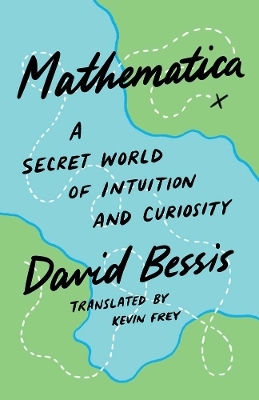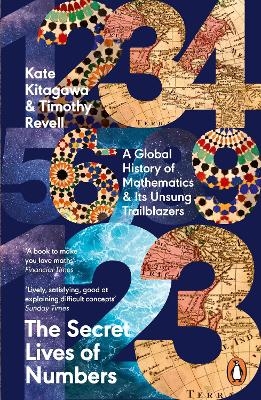
Sherlock Holmes in Babylon
Mathematical Association of America (Verlag)
978-0-88385-546-1 (ISBN)
- Titel erscheint in neuer Auflage
- Artikel merken
Covering a span of almost 4000 years, from the ancient Babylonians to the eighteenth century, this collection chronicles the enormous changes in mathematical thinking over this time, as viewed by distinguished historians of mathematics from the past and the present. Each of the four sections of the book (Ancient Mathematics, Medieval and Renaissance Mathematics, The Seventeenth Century, The Eighteenth Century) is preceded by a Foreword, in which the articles are put into historical context, and followed by an Afterword, in which they are reviewed in the light of current historical scholarship. In more than one case, two articles on the same topic are included, to show how knowledge and views about the topic changed over the years. This book will be enjoyed by anyone interested in mathematics and its history - and in particular by mathematics teachers at secondary, college, and university levels.
Part I. Ancient Mathematics: Foreword; Sherlock Holmes in Babylon; Words and pictures: new light on Plimpton 322; Mathematics 600 BC–600 AD; Diophantus of Alexandria; Hypatia of Alexandria; Hypatia and her mathematics; The evolution of mathematics in ancient China, Liu Hui and the first golden age of Chinese mathematics; Number systems of the North American Indians; The number systems of the Mayas; Before the conquest; Afterword; Part II. Medieval and renaissance mathematics; Foreword; The discovery of the series formula for π; Ideas of calculus in Islam and India; Was calculus invented in India?; An early iterative method for the determination of sin 1º; Leonardo of Pisa and his liber quadratorum; The algorists vs. the abacists: an ancient controversy on the use of calculators; Sidelights on the Cardan-Tartaglia controversy; Reading Bombelli's x-purgated algebra; The first work on mathematics printed in the New World; Afterword; Part III. The Seventeenth Century: Foreword; An application of geography to mathematics: history of the integral of the secant; Some historical notes on the cycloid; Descartes and problem-solving; Rene Descartes' curve-drawing devices: experiments in the relations between mechanical motion and symbolic language; Certain mathematical achievements of James Gregory; The changing concept of change: the derivative from Fermat to Weierstrauss; The crooked made straight: Roberval and Newton on tangents; On the discovery of the logarithmic series and its development in England up to Cotes; Isaac Newton: man, myth, and mathematics; Reading the master: Newton and the birth of celestial mechanics; Newton as an originator of polar coordinates; Newton's method for resolving affected equations; A contribution of Leibniz to the history of complex numbers; Functions of a curve: Leibniz's original notion of functions and its meaning for the parabola; Afterword; Part IV. The Eighteenth Century: Foreword; Brook Taylor and the mathematical theory of Linear Perspective; Was Newton's calculus a dead end? The continental influence of Maclaurin's treatise of fluxions; Discussion of fluxions: from Berkeley to Woodhouse; The Bernoulli and the harmonic series; Leonhard Euler 1707–1783; The number; Euler's vision of a general partial differential calculus for a generalized kind of function; Euler and the fundamental theorem of algebra; Euler and the differentials; Euler and quadratic reciprocity; Afterword; Index; About the editors.
| Erscheint lt. Verlag | 14.10.2004 |
|---|---|
| Reihe/Serie | Spectrum |
| Zusatzinfo | 6 Tables, unspecified; 65 Halftones, unspecified; 163 Line drawings, unspecified |
| Verlagsort | Washington |
| Sprache | englisch |
| Maße | 275 x 196 mm |
| Gewicht | 967 g |
| Themenwelt | Mathematik / Informatik ► Mathematik ► Geschichte der Mathematik |
| ISBN-10 | 0-88385-546-1 / 0883855461 |
| ISBN-13 | 978-0-88385-546-1 / 9780883855461 |
| Zustand | Neuware |
| Haben Sie eine Frage zum Produkt? |
aus dem Bereich


